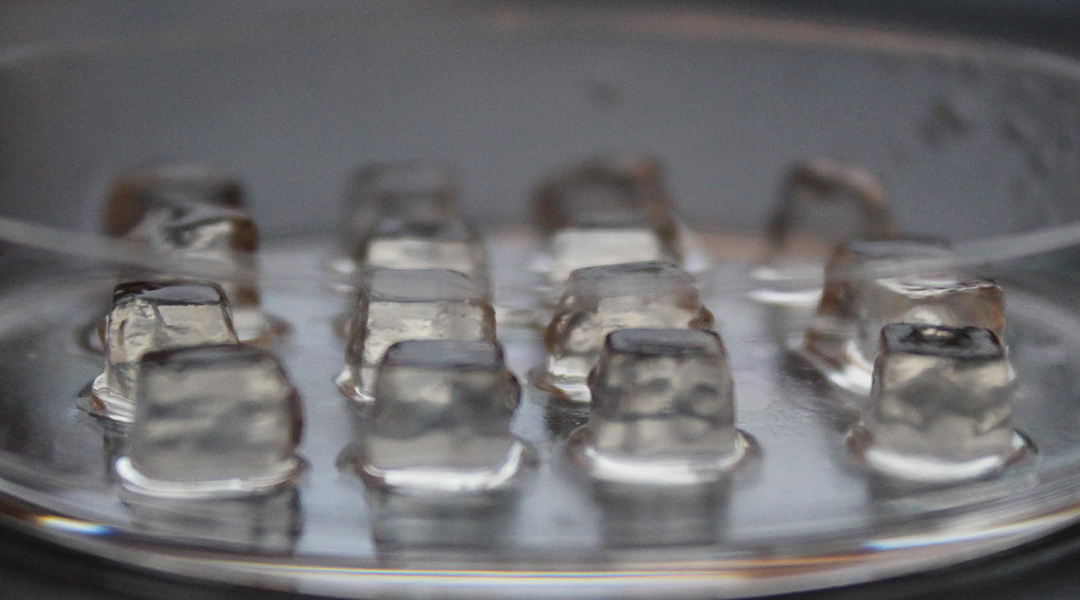Researchers have used a special 3D bioprinting technique to create advanced models of the human brain, called organoids. Their new approach retains the natural characteristics of brain cell cultures, allowing for greater organoid complexity than ever before.
Customizable, anatomically accurate brain organoids like the one developed in this study have potential usefulness for many reasons, including detailed research into neurological diseases and brain development, and testing how drugs enter and interact in the brain.
However, brain organoids developed to date have failed to realistically replicate the extracellular matrix, an important support structure made of proteins and carbohydrates that provides the organoids with a protective environment for growth, limiting their usefulness.
“Brain organoid cultures are currently limited by the lack of ability to precisely control their extracellular environment,” the researchers explained in their article. They also noted that previous approaches are difficult to scale up.
Incomplete brain organoids, poor models
Without a realistic replica of this matrix, it is possible that the organoids may not develop or function in a way that faithfully represents the human brain.
Previous brain organoids also lacked the brain’s network of blood vessels, known as the vasculature. However, vascular cells, which make up about 10% of all cell types in the brain, are not formed from the same stem cells as other brain cells, such as neurons, and must be integrated into organoids using a different approach.
“Most cell types in the brain originate from a cell line that does not produce vascular cells,” explained Steven Sloan, lead researcher on the study and professor of human genetics at Emory University School of Medicine in Atlanta, Georgia.
“Unless these cells are physically integrated into the organoid or their creation is forced through genetic tricks, typical brain organoid cultures therefore have no vessels,” he explained.
Printing the organoid scaffolds
To precisely shape the extracellular matrix and effectively introduce vascular cells into brain organoids, Sloan and his team used a 3D printing technique called embedded bioprinting.
In traditional 3D bioprinting, a “bioink” containing living cells and a biocompatible scaffold material is slowly forced into the air through a nozzle by the print head—the part that contains the ink—at computer-programmed pressure and speed, creating 3D objects.
However, when cells are embedded in bioinks and printed directly, they may lose some of their innate abilities, such as self-assembly, which is not ideal. To avoid this possibility, Sloan and his team decided to print the scaffold first and then encapsulate the pre-made organoid inside it.
The problem with direct printing is that many bio-inks are not viscous enough to hold their shape and therefore easily collapse or deform under gravity. To solve this problem, the print head can be immersed in a more viscous material – such as gelatin – as a support. This material can then be easily washed away once the printing process is complete.
“The high viscosity (of the substrate) allows delicate structures (or intricate details like channels or pores) to maintain their structure throughout the printing process,” Sloan explained.
The GelIMA scaffold offers an imitation
To print the organoid scaffold, the researchers chose a hydrogel as a viscous support material and added a gelatin-based material called GelMA to the bioink formulation to mimic the extracellular matrix.
“GelMA is great because it is biologically inert, cells grow well on it, and it can be very easily modified in the future by incorporating proteins or small molecules,” said Sloan.
They also programmed the printer to incorporate channels into the scaffold design so they could load the organoid into the scaffold and introduce vascular cells separately.
They loaded the organoid, which they had previously grown from a culture of human induced pluripotent stem cells, through the top channel of the hydrogel. After sealing the organoid in place with UV light, thus strengthening the scaffold, they coated the side channels with endothelial cells from human umbilical veins. These stem cells gradually infiltrated the organoid in the center of the scaffold, supplying it with blood vessels.
To adjust the composition and physical properties of the extracellular matrix-like scaffold, including its porosity and stiffness – which vary from person to person in an extracellular matrix and are affected by disease – the concentration of the gelatin-based material or the duration and intensity of UV irradiation can be changed.
“These scaffolds can have almost any desired architecture and are reproducible at large scale,” Sloan explained. “Most importantly, the organoids are comfortable and develop normally in this bioprinted scaffold.”
Where to now?
“Although this is certainly not the first time that vascular cells have been ‘mixed’ with brain organoids, it is a novel approach to introducing vascularization that can be functional,” Sloan said of her study.
According to Sloan, simply mixing vascular cells with an organoid does not automatically result in a functioning organoid. By incorporating channels into the scaffold and mimicking the flow of fluid in and out of the brain, their bioprinting approach enables true functionality.
He and his team plan to update their model with this fluid flow feature. “We don’t yet have a functional vasculature with a clear inlet and outlet (to create fluid flow in and out of the organoid), and that needs to be a major focus of the next steps,” Sloan explained.
“Without this functional component, it remains difficult to study important questions such as the formation of the blood-brain barrier or even to think about studying the permeability of drugs through the brain vessels,” he continued.
Sloan is also looking forward to adding more features to the model using his bioprinting approach.
“You can load these bioinks with all sorts of things, so there are many options to incorporate other signaling molecules, growth factors or even morphogens (long-range signaling molecules) into the development of organoids,” he told us.
Reference: Melissa A. Cadena et al. A 3D bioprinted cortical organoid platform for modeling human brain development. Advanced Materials for Healthcare (2024). DOI: 10.1002/ adhm.202401603

